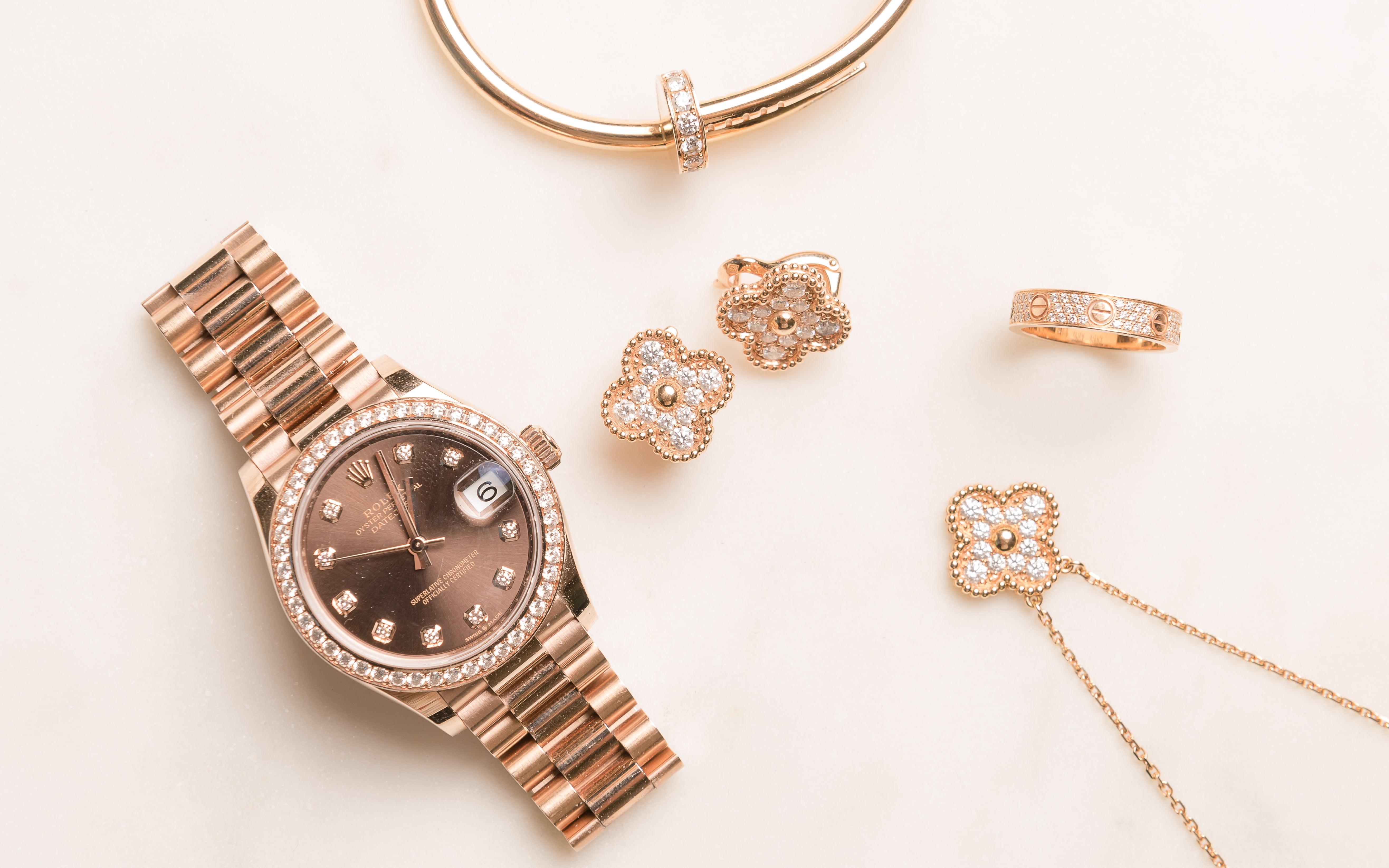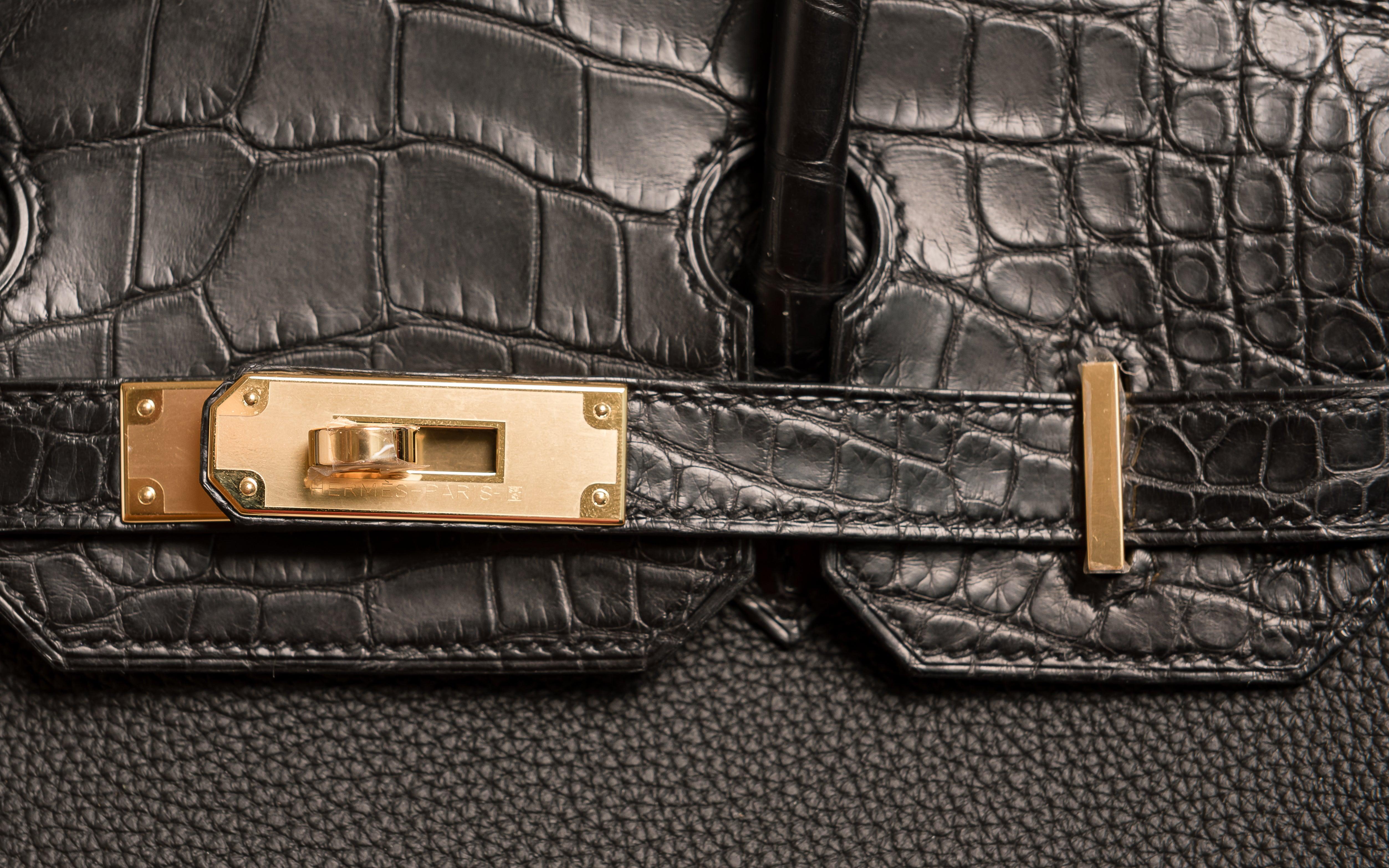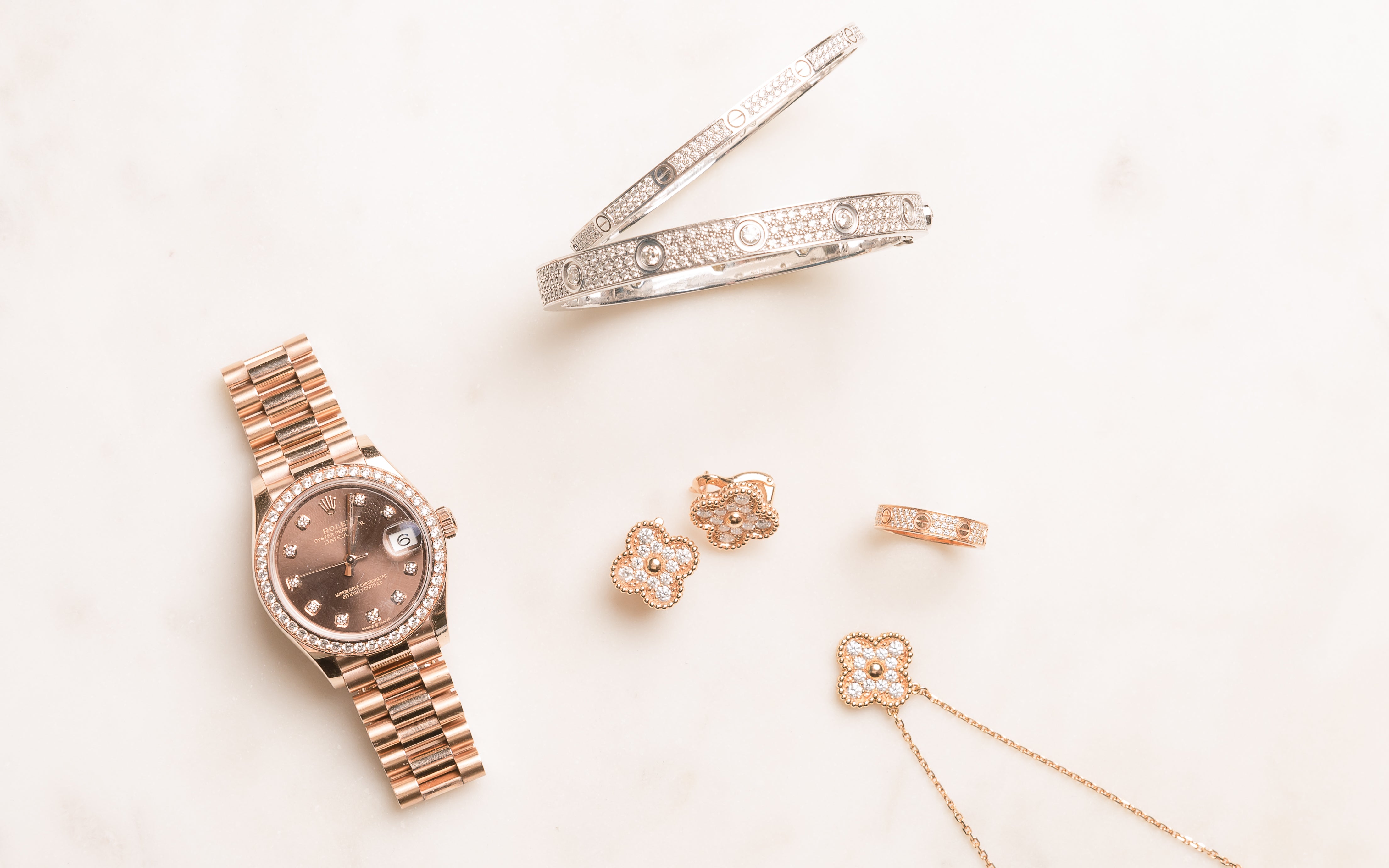The Art of Authentication: How Experts Verify Luxury Items - Unveiling Industry Secrets

Luxury goods authentication is a crucial process in the high-end retail industry. As counterfeit products flood the market, experts employ sophisticated techniques to verify the authenticity of designer items. Authentication specialists use a combination of expert knowledge, advanced technology, and meticulous examination to distinguish genuine luxury goods from convincing fakes.

The art of authentication requires years of experience and a deep understanding of luxury brands. Specialists at companies like FASHIONPHILE recognize that each brand has unique intricacies, necessitating a specialized approach. They scrutinize every detail, from stitching patterns to material quality, ensuring that only genuine items reach discerning consumers.
In recent years, technological advancements have revolutionized the authentication process. Platforms like eBay have implemented Authenticity Guarantee programs for high-value items such as sneakers and watches. These initiatives have led to significant growth in luxury sales and increased consumer confidence in the secondary market.
Key Takeaways
- Authentication experts combine specialized knowledge and technology to verify luxury goods.
- Each luxury brand requires a unique authentication approach due to distinct product characteristics.
- Authenticity programs have boosted consumer trust and sales in the luxury resale market.
Understanding Authentication in Luxury Goods

Authentication in luxury goods ensures genuine products reach consumers and protects brand integrity. Expert authenticators employ various methods to verify high-end items, adapting their techniques as technology evolves.
Defining Authenticity and Its Importance
Authenticity in luxury goods means an item is genuine, created by the brand it claims to represent. It's crucial for maintaining brand value and consumer trust. Authentic products showcase the quality and craftsmanship synonymous with luxury brands.
We find that authenticity guarantees protect buyers from counterfeit goods. This assurance is vital in the resale market, where luxury sales have seen double-digit growth.
Brands invest heavily in unique design elements and superior materials. These distinctive features become key identifiers in the authentication process.
The Role of Expert Authenticators
Expert authenticators are skilled professionals who examine luxury items meticulously. They possess deep knowledge of brand-specific details and manufacturing processes.
We rely on these experts to spot even the most subtle differences between genuine and counterfeit products. Their expertise covers various aspects:
- Material quality and texture
- Stitching patterns and techniques
- Hardware and finishes
- Serial numbers and date codes
- Packaging and accompanying documents
Authenticators often use specialized tools like magnifying glasses and UV lights to examine items closely. Their role is critical in maintaining the integrity of the luxury resale market.
Evolution of Authentication Methods
Authentication methods have evolved significantly with technological advancements. Traditional techniques focused on physical inspection, but now include more sophisticated approaches.
We've seen the introduction of digital authentication solutions:
- RFID tags for product tracking
- Blockchain technology for verifying ownership history
- AI-powered image recognition for spotting fakes
Blockchain-based authentication offers high potential, though consumer awareness remains low. This technology can provide a transparent record of an item's lifecycle.
Some brands are incorporating microscopic identifiers or unique material compositions into their products. These serve as covert authentication features, making replication extremely difficult for counterfeiters.
Technological Advances in Authentication
Authentication methods have evolved rapidly with cutting-edge technologies. These innovations enhance accuracy, speed, and security in verifying luxury items.
AI and Machine Learning
Visual recognition technology has revolutionized authentication processes. We now use AI algorithms to analyze high-resolution images of luxury items, detecting minute details human eyes might miss. Machine learning models can identify patterns, materials, and manufacturing techniques unique to genuine products.
These systems improve over time, learning from vast databases of authenticated items. We've seen AI successfully spot counterfeit watches by examining dial prints and movement engravings. In the art world, AI assists in analyzing brushstrokes and pigments, complementing expert knowledge.
AI-powered authentication is fast and scalable, allowing us to verify large volumes of items quickly. This technology has become invaluable in online marketplaces, where rapid authentication is crucial.
Blockchain and Digital Product Identities
Blockchain technology offers a tamper-proof method for tracking luxury items from production to sale. We create unique digital identities for products, recording each transaction and transfer of ownership.
This immutable ledger ensures transparency and traceability throughout the supply chain. Luxury brands can embed NFC chips or QR codes in their products, linking them to their blockchain records.
Consumers can easily verify an item's authenticity by scanning these codes with their smartphones. The blockchain provides a complete history of the product, including its origin, materials used, and previous owners.
RFID and Holographic Watermarks
Radio-Frequency Identification (RFID) tags have become a staple in luxury authentication. We embed these tiny chips in products, allowing for contactless verification and inventory tracking.
RFID technology is particularly useful for luxury clothing and accessories. It enables quick authentication at customs checkpoints and in retail environments.
Holographic watermarks add another layer of security. We use advanced printing techniques to create intricate, difficult-to-replicate holograms on product tags or packaging.
These holograms often incorporate multiple security features, such as color-shifting inks and micro-text. They provide a quick visual cue for authenticity, complementing other high-tech verification methods.
Combatting Counterfeit in the Luxury Market
The luxury market faces significant challenges from counterfeit products. We explore key strategies to authenticate items, educate consumers, and foster industry collaboration in the fight against counterfeiting.
Assessing Counterfeit Products
Luxury brands employ sophisticated techniques to identify fake goods. We use AI and blockchain technology to verify product authenticity. These tools analyze minute details like stitching patterns and material composition.
High-end brands often incorporate hidden markers or unique identifiers into their products. These can include:
- Holographic tags
- Microchips
- Specialized inks visible only under UV light
We also examine packaging quality, serial numbers, and accompanying documentation. Authentic items typically have consistent branding across all elements.
Consumer Awareness and Education
Educating consumers is crucial in combating counterfeits. We provide detailed guides on our websites showing how to spot fake products. This includes highlighting common red flags such as:
- Suspiciously low prices
- Poor quality materials or craftsmanship
- Misspellings or inconsistencies in branding
We encourage customers to purchase from authorized retailers or directly from brand websites. The secondary luxury market poses higher risks, so we advise caution when buying from resellers.
Social media campaigns raise awareness about the negative impacts of counterfeit purchases. These include funding criminal activities and potential health risks from substandard materials.
Collaborative Anti-Counterfeiting Efforts
We recognize that fighting counterfeits requires a united front. Luxury brands often collaborate with law enforcement agencies to identify and shut down counterfeit operations.
Industry associations play a key role in coordinating efforts. We share intelligence on counterfeit trends and emerging threats. This allows for more effective targeting of major counterfeit producers and distributors.
Blockchain technology offers promising solutions for product authentication. We're exploring ways to create secure, traceable records of an item's production and ownership history.
Partnerships with online marketplaces help remove counterfeit listings quickly. We provide training to their staff on identifying fake luxury goods.
Verification Across the Luxury Brand Spectrum
Luxury authentication encompasses a wide range of high-end products, each with unique identifiers and craftsmanship elements. The process requires specialized knowledge and attention to detail, from examining stitching on handbags to verifying the intricate movements of luxury timepieces.
Case Studies: From Handbags to Watches
Luxury authentication experts face diverse challenges across different product categories. For handbags, we scrutinize materials, hardware, and stitching patterns. A Hermès Birkin, for instance, demands close inspection of the saddle stitch and blind stamp.
Watches present a different set of challenges. We examine the movement, dial details, and case finishing. For a Rolex, the cyclops magnification and rehaut engraving are crucial authentication points.
Jewelry authentication involves assessing gemstones, metal purity, and maker's marks. We use specialized equipment like loupes and metal testers in this process.
The Role of Serial Numbers and Craftsmanship
Serial numbers play a vital role in verifying luxury items. We check these against brand databases when available. For example, Chanel bags have hologram stickers with unique codes.
Craftsmanship is equally important. We look for:
- Consistent stitching
- Quality of materials
- Precise alignment of patterns
- Proper weight and feel
Each brand has specific craftsmanship hallmarks. Louis Vuitton's canvas should have a certain texture, while Gucci's GG Supreme canvas has a distinct pattern.
Authenticating For The Resale Industry
The luxury resale market is booming, with platforms like The RealReal and Vestiaire Collective relying on robust authentication processes. We work closely with these platforms to ensure only genuine items are sold.
Our authentication methods evolve constantly to keep up with sophisticated counterfeits. We use a combination of visual inspection, tactile examination, and sometimes technology like AI and spectroscopy.
Auction houses also depend on our expertise. We provide certificates of authenticity for high-value items, giving buyers confidence in their purchases.
Frequently Asked Questions
Authentication of luxury items involves complex processes and specialized expertise. Trusted methods, reputable services, and extensive training play crucial roles in verifying genuine products across various categories.
What are the most trusted methods for verifying the authenticity of luxury items?
Experts rely on a combination of visual inspection, material analysis, and brand-specific details to authenticate luxury goods. Close examination of craftsmanship is essential, focusing on stitching quality, hardware, and overall construction.
We also use specialized tools like magnifying glasses and UV lights to detect counterfeit materials or inconsistencies. Brand-specific identifiers such as serial numbers, holograms, and authenticity cards are carefully verified against manufacturer databases.
Which are the top online services for luxury item authentication?
Several reputable online platforms offer authentication services for luxury items. FASHIONPHILE is recognized as a leader in luxury re-commerce, employing brand specialists for thorough authentication.
Other trusted services include The RealReal, Vestiaire Collective, and eBay's Authenticity Guarantee program. These platforms use expert authenticators and often provide detailed reports or certificates of authenticity.
What training is required to become an expert in luxury goods authentication?
Becoming a luxury goods authenticator requires extensive knowledge and hands-on experience. Many experts start with specialized courses focusing on specific brands or product categories.
We typically undergo apprenticeships or mentoring programs with established authenticators. Continuous learning is crucial, as counterfeiters constantly evolve their techniques. Regular brand updates and industry seminars help experts stay current.
How do authentication experts determine the genuineness of artwork?
Artwork authentication involves a multifaceted approach. We examine the piece's provenance, studying its documented history and chain of ownership.
Technical analysis includes materials testing, pigment analysis, and examination of the artist's technique. We often use advanced imaging technologies like X-rays and infrared reflectography to reveal underlying layers or alterations.
What role does brand authenticity play in the value of luxury goods?
Brand authenticity significantly impacts the value of luxury items. Genuine products from prestigious brands command higher prices due to their quality, craftsmanship, and exclusivity.
We've observed that authenticated luxury items often retain or increase in value over time. For example, authenticated luxury watches on certain platforms have seen buyers increase their spending to over $9,000 on watches alone.
How effective and reliable is the Entrupy authentication process?
Entrupy's authentication process utilizes artificial intelligence and machine learning to analyze microscopic details of luxury items. The system compares these details against a vast database of authentic products.
We find Entrupy's technology to be highly effective, with a reported accuracy rate of over 99%. However, it's important to note that while technology-driven authentication is powerful, it's often used in conjunction with human expertise for comprehensive verification.



